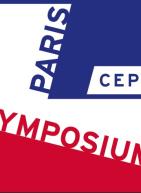DP18342 Misclassification in Linear-in-Means Models: Theory and Application to Peer Effects Estimation
This paper investigates, both theoretically and empirically, the consequences of misclassification in an linear-in-means (LIM) model. We build the theoretical analysis on a simple form of an LIM model—including only an individual characteristic and its groupwise average—and demonstrate that under random group formation and nondifferential measurement error, the peer effect is biased by an “own” and a “smearing effect.” As the number of groups tends to infinity, the smearing effect approaches zero with almost probability one, while the own effect turns into a simple attenuation bias that is proportional to the misclassification rates. Applying the theoretical results to the estimation of the peer effect of students with learning disabilities on other students’ performance, we show that the results are in line with the theoretical predictions as long as the considered misclassified variables exclusively capture learning disabilities.

